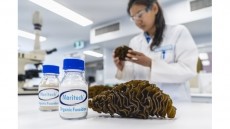Bacteria in newborn's stool may indicate risk of obesity

Childhood obesity is an increasing problem all over the world and antibiotic exposure in infancy and maternal use of antimicrobials during pregnancy have been suggested as factors promoting obesity in children.
Earlier prospective studies of infants have shown intestinal microbiomes at 10 days and 2 years of age to be associated with obesity at the age of 12 years, and the gut microbiome at 3 months with body mass index (BMI) at the age of 5 to 6 years.
Researchers from the University of Oulu, Finland, previously studied immediate perinatal factors, such as the mode of delivery or antibiotics during delivery, or the sampling time, on the meconium - the first stool after birth which is formed in utero - and found these factors did not clearly affect the microbial composition of the stool. The novel concept of foetal microbiome has been suggested to explain such findings. This idea is still controversial and the clinical significance of the microbiome present in the first stool is not well understood.
Therefore, the Uni of Oulu team set out the current study to discover whether alterations in the meconium microbiome could predict later overweight in children.
They found the microbiome of the first‐pass meconium predicted subsequent overweight at the age of three. Specifically, increased abundances of the phylum Bacteroidetes, the genus Bacteroides and specifically B . fragilis in the meconium were associated with overweight at the age of three years.
The scientists suggest this means the association between the gut microbiome and overweight appears to start already during pregnancy and at birth.
Method
Using a sample of 212 newborns, the team collected samples from the first‐pass meconium, and were sent stool samples from the babies at the age of one. They followed up the growth of children until they reached the age of three from the child health clinics, where trained nurses measured the children's weight and length/height at scheduled visits.
The stool samples were subjected to next‐generation sequencing of the bacterial 16S gene. In addition, the families completed a detailed follow‐up questionnaire at one year of age including information about breastfeeding, formula feeding and introduction to solid foods.
In this prospective population‐based cohort study, the microbiome of the first‐pass meconium predicted the risk of being overweight at the age of three years, but the intestinal microbiome at one year was not clearly associated with the risk of being overweight.
Their findings are in-keeping with previous studies. Bacteroides and Staphylococcus aureus have been reported to show higher frequencies during pregnancy in women with overweight compared with women normal weight, and a higher frequency of Bacteroides has been shown to correlate with excessive weight gain during pregnancy. High levels of B . fragilis and low levels of Staphylococcus in infants aged between 3 weeks and 1 year have been associated with higher BMI at preschool age.
The sample size was limited regarding overweight subjects, and thus the researchers could not perform a multivariate analysis on the effect of antimicrobials before and after birth on the microbiome and on growth. The team was also not able to conclude whether the association between the meconium microbiome and subsequent overweight was a direct part of the pathogenic pathway leading to obesity in children or merely a surrogate marker reflecting maternal factors and the microbial environment during pregnancy.
Source: Pediatric Obesity
Korpela. K., et al
"Microbiome of the first stool and overweight at age 3 years: A prospective cohort study"















